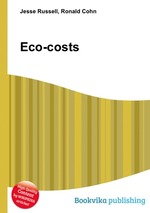Eco-costs
Jesse Russell Ronald Cohn
бумажная книга
High Quality Content by WIKIPEDIA articles! Eco-costs are a measure to express the amount of environmental burden of a product on the basis of prevention of that burden. They are the costs which should be made to reduce the environmental pollution and materials depletion in our world to a level which is in line with the carrying capacity of our earth. For example: for each 1000 kg CO2 emission, one should invest € 135,- in offshore windmill parks (and the other CO2 reduction systems at that price or less). When this is done consequently, the total CO2 emissions in the world will be reduced by 65% compared to the emissions in 2008. As a result global warming will stabilise. In short: "the eco-costs of 1000kg CO2 are € 135,-". Similar calculations can be made on the environmental burden of acidification, eutrification, summer smog, fine dust, eco-toxicity, and the use of metals, fossil fuels and land (nature). As such, the eco-costs are virtual costs, since they are not yet integrated in the real life costs of current production chains (Life Cycle Costs). The eco-costs should be regarded as hidden obligations. The eco-costs of a product are the sum of all eco-costs of emissions and use of materials and energy during the life cycle "from cradle to cradle". The widely accepted method to make such a calculation is called Life Cycle Assessment (LCA), which is basically a mass and energy balance, defined in the 14040 and ISO 14044.


